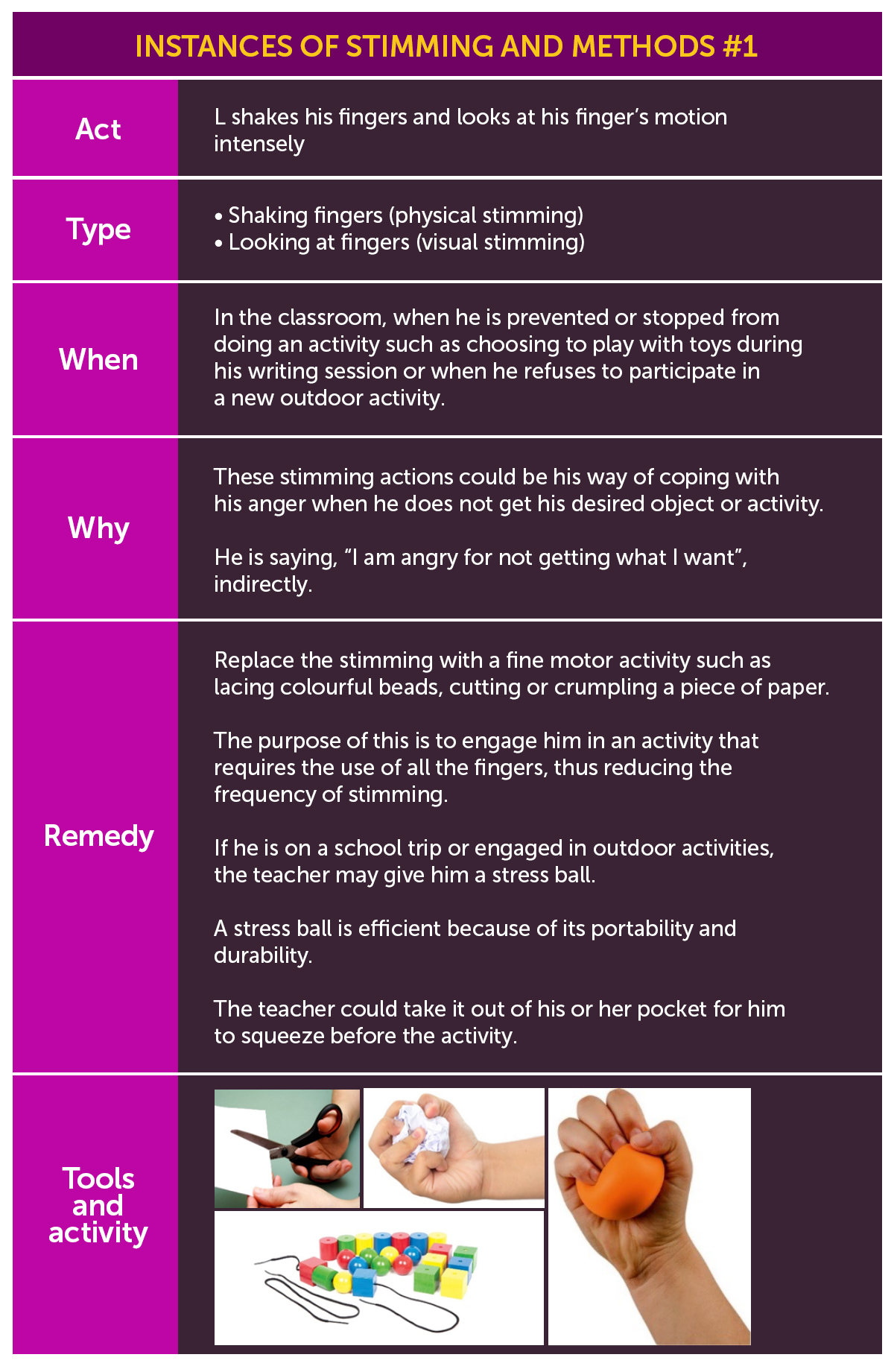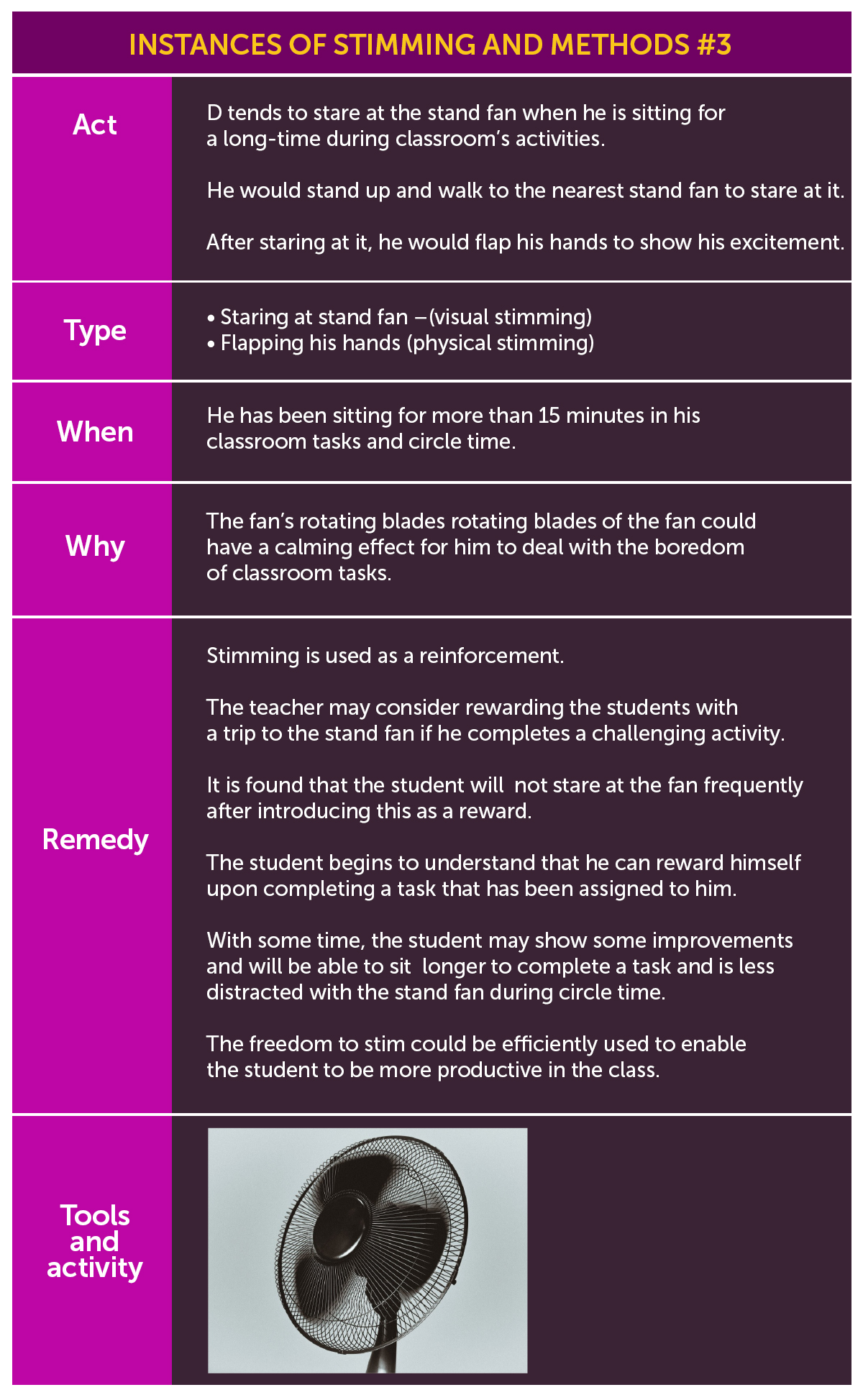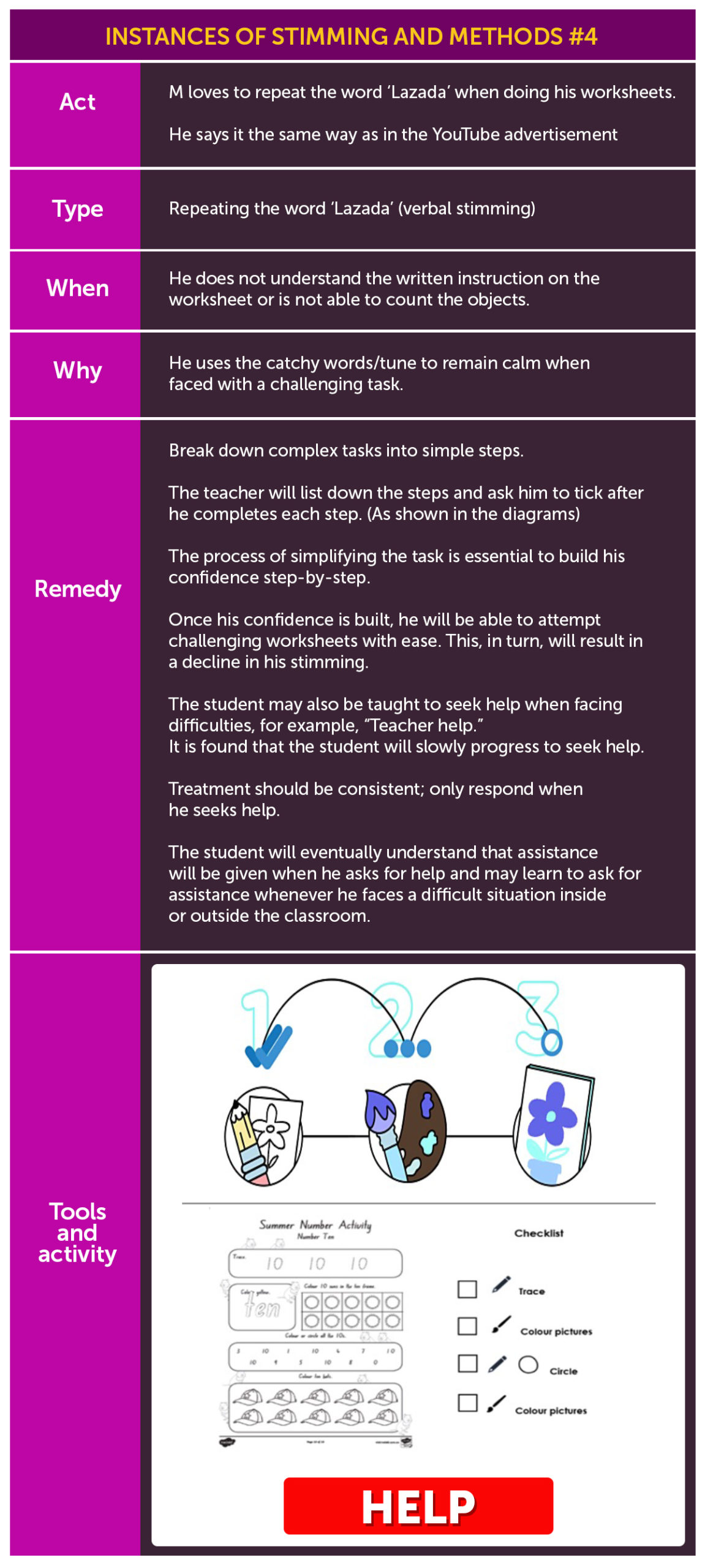Stimming: What You Need to Know
Stimming refers to a range of repetitive sensation-seeking behaviour. Some examples include hair twirling, knuckle cracking, nail-biting, thumb sucking, and staring at the ceiling when interacting with others. Almost everyone engages in some form of stimming. We stim when we are anxious, excited or bored. It helps us to cope with our emotions and we normally stop upon realising that it makes people around us uncomfortable. However, due to an autistic child’s lack of social awareness, they are unable to sense that people are uncomfortable and stop.
Very often we hear stories of parents who are apprehensive about bringing their autistic children to public places. While it is undeniable that adults with little or no knowledge about autism, or sensory sensitivities, will often misinterpret stimming as wrong or inappropriate behaviour, stimming is important to autistic children as it helps them cope with unpleasant situations.
Naughty seems to be the easiest term to describe their behaviour, but they are trying to communicate their challenges in adapting to this world. Should we punish them for our inability to understand their message? No, we should take time to observe and listen to them. It is important that we understand how autistic children express themselves in different situations. They could use either their physical movement, visual, verbal sensory or a combination of all to express themselves. The process of understanding can be time-consuming.
However, it should be a priority to help them regulate their behaviour. Parents, teachers, therapists and society could work together to support them. The following section will look at the main types of stimming and the beneficial interventions employed by our teachers and therapists at Taarana to enable them to develop in this beautiful world.
Three main types of stimming:
Physical – Moving hands and legs. For example, shaking legs, flapping hands and jumping around.
Visual – Focusing on specific objects with their eyes. For example, looking at something with the corner of their eyes, rotating objects and movement of fingers.
Verbal – Producing sounds with their body or object. For example, repeating catchy song lyrics, slamming the door and playing the same song repeatedly.
The following table provides various instances of stimming and methods employed by our teachers and therapists




References
https://www.autismparentingmagazine.com/autism-stimming-causes-management-and-types/
https://raisingchildren.net.au/autism/behaviour/common-concerns/stimming-asd
https://leader.pubs.asha.org/doi/10.1044/leader.FTR2.15012010.14
https://www.autismparentingmagazine.com/fidget-toys-to-relieve-stress-anxiety/
https://www.theowlhousegoa.org/post/strategies-to-manage-verbal-stimming
https://www.carautismroadmap.org/stimming-what-is-it-and-does-it-matter/
By Chan Yee Bei, Loke An Gie, Yu Dickson

